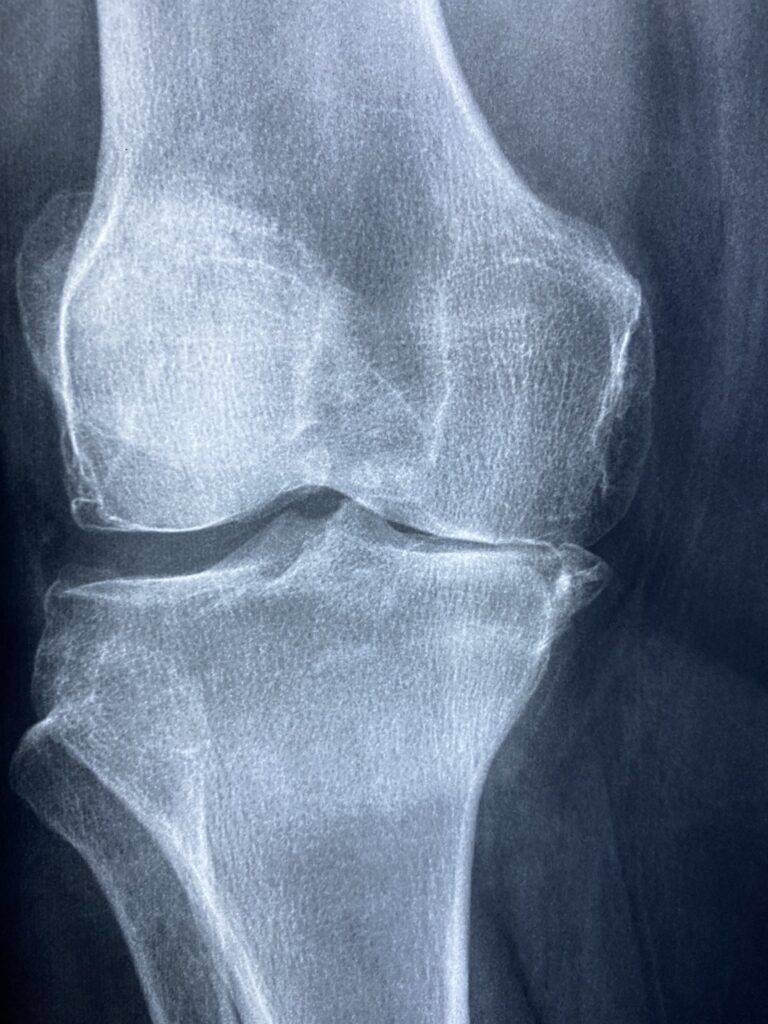What is Knee Pain? Knee pain is a common complaint that can affect people of all ages. It may result from various causes, including injuries, overuse, degenerative conditions, or underlying medical conditions. Understanding the underlying cause of knee pain is essential for effective management and treatment.
Causes of Knee Pain:
- Injuries: Ligament injuries (such as ACL tears), meniscus tears, tendonitis, fractures, dislocations, and strains or sprains can cause acute knee pain.
- Degenerative Conditions: Osteoarthritis, rheumatoid arthritis, and other degenerative joint diseases can lead to chronic knee pain and stiffness.
- Overuse: Repetitive activities, excessive strain, or prolonged standing can result in overuse injuries and knee pain.
- Medical Conditions: Conditions such as gout, bursitis, tendinitis, and infections can cause inflammation and pain in the knee joint.
- Structural Abnormalities: Congenital abnormalities, misalignment of the knee joint, or biomechanical issues may contribute to knee pain.
Symptoms of Knee Pain:
- Pain: Sharp, stabbing, dull, or throbbing pain may be experienced in the knee joint, depending on the underlying cause.
- Swelling: Inflammation and swelling around the knee joint may be present, affecting mobility and range of motion.
- Stiffness: Difficulty bending or straightening the knee, particularly after periods of inactivity, may occur.
- Instability: Feeling of weakness, instability, or giving way of the knee joint may be reported, especially after injury.
- Redness and Warmth: Inflammation and increased blood flow to the affected area may result in redness and warmth over the knee joint.
Diagnosis of Knee Pain:
- Physical Examination: A healthcare provider will conduct a thorough physical examination, including assessing range of motion, stability, and tenderness of the knee joint.
- Imaging Tests: X-rays, MRI scans, CT scans, or ultrasound may be ordered to visualize the structures of the knee joint and identify any abnormalities or injuries.
- Laboratory Tests: Blood tests may be performed to evaluate for signs of inflammation, infection, or underlying medical conditions contributing to knee pain.
Management of Knee Pain:
- Rest and Activity Modification: Avoiding activities that exacerbate pain and modifying physical activities to reduce strain on the knee joint can help promote healing.
- Ice and Heat Therapy: Applying ice packs or cold compresses to the affected area can help reduce inflammation and pain, while heat therapy can help relax muscles and improve blood circulation.
- Pain Relief Medications: Over-the-counter pain relievers such as acetaminophen, ibuprofen, or naproxen may help alleviate pain and reduce inflammation.
- Physical Therapy: A structured exercise program focused on strengthening muscles, improving flexibility, and enhancing joint stability can be beneficial for managing knee pain and improving function.
- Bracing and Support: Knee braces, orthotic devices, or supportive footwear may be recommended to provide stability and reduce stress on the knee joint.
- Injections: Corticosteroid injections, hyaluronic acid injections, or platelet-rich plasma (PRP) injections may be considered for managing inflammation and pain in the knee joint.
- Surgery: In cases of severe injury or degenerative joint disease, surgical interventions such as arthroscopic surgery, meniscus repair, ligament reconstruction, or knee replacement surgery may be necessary.
Conclusion: Knee pain can significantly impact an individual’s quality of life and mobility. By identifying the underlying cause of knee pain through thorough evaluation and diagnosis, healthcare providers can develop personalized treatment plans to address symptoms and improve function. Effective management strategies may include rest, physical therapy, pain relief medications, supportive devices, and, in some cases, surgical interventions. Prompt medical attention and appropriate management can help individuals with knee pain regain mobility, alleviate discomfort, and enhance their overall well-being.




